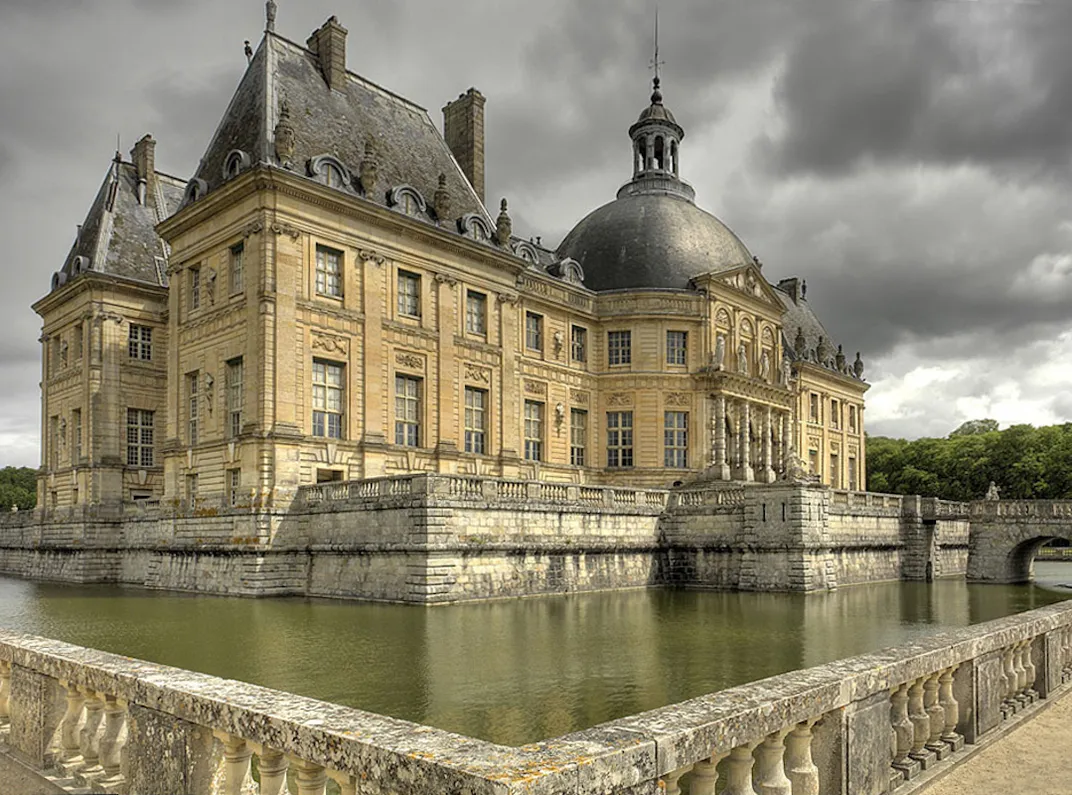Never Realized 17th-Century Fresco Will Be Digitally Recreated at French Château
The masterpiece was originally planned by the great French painter Charles Le Brun
/https://tf-cmsv2-smithsonianmag-media.s3.amazonaws.com/filer/e1/9b/e19be864-9409-4832-b5a7-fe0c24a3560a/projet_le_brun_-_plafond1hd_c_cassaigne.jpg)
Seventeenth-century French artist Charles Le Brun won the favor of Louis XIV with his first royal commission, "The family of Darius before Alexander" (1661), which captures the Queen of Persia kneeling at the feet of Alexander the Great. Promoted to First Painter to the King in 1664, his powerful influence over France lives on today among the statues he designed in the park of Versailles and his interior decorating of the opulent palace.
But one masterpiece of his has gone unseen. "The Palace of the Sun," a fresco he had planned for the Baroque château that served as inspiration for Versailles, was commissioned by his patron Nicolas Fouquet, the king’s finance minister. But when Fouquet was arrested in 1661 for treason and embezzlement, and the work for the Vaux-le-Vicomte château went unrealized.
Over the centuries, the château has passed through the hands of several owners, and finally opened to the public in 1968. Now, on the 50th anniversary of opening its gates to all, Hannah McGivern reports for The Art Newspaper that the managers of Vaux-le-Vicomte have announced plans to digitally recreate Le Brun’s never-before-realized fresco.
Ascanio de Vogüé, a descendant of Alfred Sommier, who restored the palace in 1875, tells McGivern that the family has wanted to recreate the fresco for years, but Vaux-le-Vicomte’s status as a historic monument has limited their abilities to make significant modifications.
Technology, however, has stepped in to help solve the problem. De Vogüé, who currently manages the castle with his brothers, explains that art historians will examine several sketches that Le Brun left behind and an engraving of the most complete drawing to recreate "The Palace of the Sun" as a video projection. The fresco will be projected on loop on the ceiling of the Grand salon of Vaux-le-Vicomte, where the work was originally supposed to be installed.
De Vogüé hopes the projection will bring to life a part of history that people can feel, not just read. “Until now, we have had signs in the rooms, an audio guide, the same things as everyone else, but today people want to have an experience,” he tells McGivern.
There are still some kinks to be worked out, including lighting. A digital display of this kind will involve blacking out the windows or restricting the experience to nighttime events only. The projection will also require as many as 30 projectors and cost a total of nearly 1 million euros, a significant financial commitment the castle doesn’t currently have. To help offset the cost of the project and other exhibitions, French newspaper le Moniteur de Seine-et-Marne reported earlier this month that the castle launched a fundraising campaign in hopes of raising 6 million euros.
De Vogüé hopes to begin installing technology for the display in late 2019 before the Vaux-le-Vicomte’s spring 2020 opening. According to its website, the estate is open March through November.
But the effort will be worth it. De Vogüé imagines that if the fresco had originally been realized it “would have been one of the most dazzling and majestic paintings of the French classical Baroque.”
